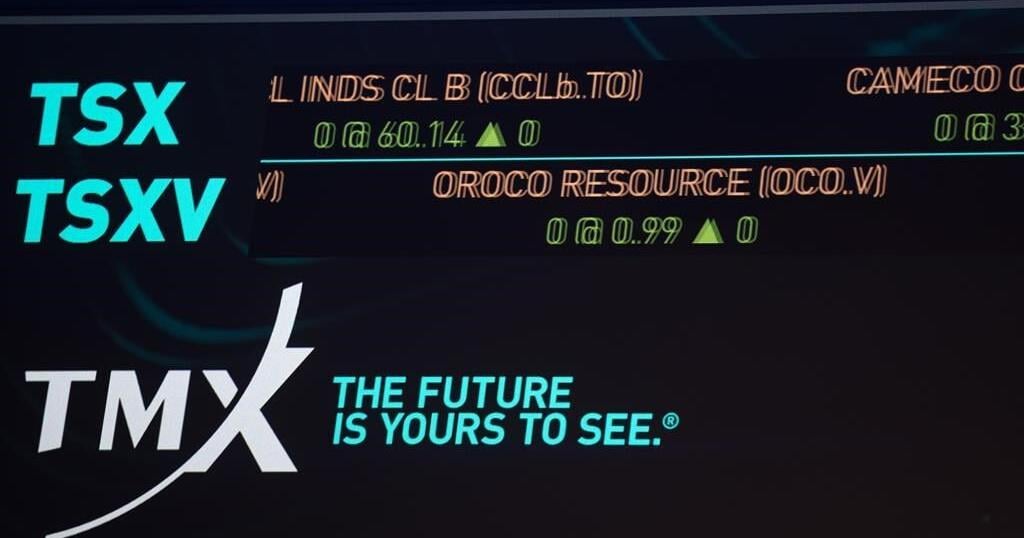Canada’s main stock index achieved another record high close Friday, after also hitting an all-time intraday record thanks to growing investor optimism about future interest rate cuts.
The S&P/TSX composite index closed up 129.39 points at 22,673.52, after hitting an intraday high of 22,750 earlier in Friday’s trading session. The index continued its momentum from Thursday, a day which saw the index gain almost 200 points on the latest report on U.S. inflation.
That report showed a continued cooling in price growth in June, marking the first monthly decline in overall inflation since May 2020. The cooler-than-expected inflation data stoked investor hopes that the U.S. Federal Reserve will start cutting its key interest rate in September — hopes that remained strong Friday in spite of a fresh update that said U.S. prices rose more at the wholesale level last month than economists expected.
“It was a very good day for the markets. It was a continuation of the optimism that was built yesterday,” said Macan Nia, co-chief investment strategist with Manulife Investment Management.
He added investors still riding the high from Thursday’s U.S. inflation reading weren’t dissuaded by Friday’s wholesale data, choosing instead to focus on the big picture.
“One would have maybe thought that would have put a little bit of water on the fire, but I think investors looked past the Producer Price Index and took a bigger step back as generally, the inflation data is moving in the right direction,” Nia said.
“There’s going to be one-offs in the data points.”
In New York, the Dow Jones industrial average was up 247.15 points at 40,000.90. The S&P 500 index was up 30.81 points at 5,615.35, while the Nasdaq composite was up 115.04 points at 18,398.45.
All three U.S. indexes had been on track to set all-time highs in afternoon trading but finished shy of them.
Investors are keen to see the U.S. Federal Reserve begin cutting interest rates, a move that would help companies of all sizes that have been under pressure from the increased cost of borrowing.
But while the Bank of Canada has already started to cut rates, Fed officials have been saying they want to see “more good data” on inflation before making a move.
“If (U.S. Fed chair) Jerome Powell comes out of the blue and becomes more hawkish and the markets start pricing out Fed cuts this year, that will definitely lead to near-term negativity (on the stock market),” Nia said.
He added the other potential risk that could disrupt this summer’s rally is the latest round of North American corporate earnings reports, which is just beginning.
“This earnings season is going to be very important. With the (recent stock market) rally, valuations are above their historical averages,” Nia said.
“I think that’s OK, as long as investors see that companies’ profit profile matches that valuation.”
On the bond market, U.S. Treasury yields swung temporarily but remained lower Friday, another indication market optimism about rate cuts is building, Nia said.
“Since the peak in yields this year at the end of April, we’ve seen yields come back down,” he said.
“I think as long as that narrative continues — yields trending lower, profits not collapsing — then the rally keeps continuing.”
The Canadian dollar traded for 73.38 cents US compared with 73.40 cents US on Thursday.
The August crude oil contract was down 41 cents at US$82.21 per barrel and the August natural gas contract was up five cents at US$2.27 per mmBTU.
The August gold contract was down US$1.20 at US$2,420.70 an ounce and the September copper contract was up eight cents at US$4.59 a pound.
This report by The Canadian Press was first published July 12, 2024.
— With files from The Associated Press
Companies in this story: (TSX:GSPTSE, TSX:CADUSD)

























